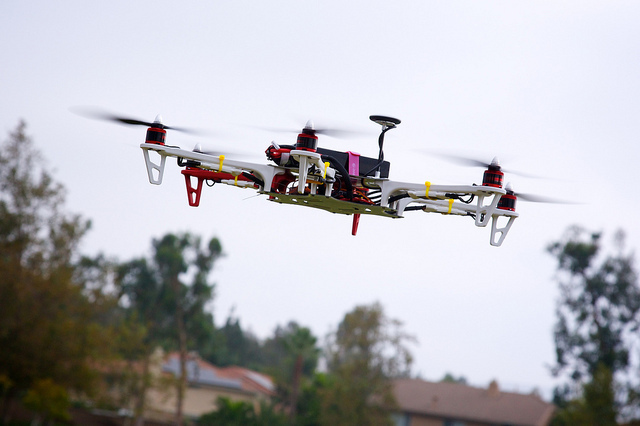Drones are becoming increasingly popular with some commercial real estate marketers. Using a drone, agents can differentiate their listings by bringing them to life in a brand new way, showing off the property in all of its glory from high in the skies.

Using drone footage means that buyers and tenants can see more than just the building alone. They can scope out the surrounding areas, hover over driveways, even fly inside the home and view stunning images of the building’s interior.
Using drones the right way
Drones must be used carefully when creating marketing videos, which means properly focusing the camera and keeping the drone itself in a fixed position in order to avoid unsightly features. Using the correct angles, it’s easy to make a smaller property appear much larger and more spacious.
However, a drone does not work so well for buildings that are shrouded by other tall structures or trees.
For a small investment of roughly $2,000, you can purchase a state-of-the-art drone that features object tracking, live high-definition video streaming, collision avoidance, up to 25 minutes of flight time, full remote control, and more.
For marketing commercial property, a drone produces dramatic and compelling images, as well as interesting virtual tours. Not only do these images look professional, they create a wow factor that demands attention.
For the best results however, it may be worth hiring a professional drone operator to capture video for you. But if you don’t hire a specialist, you can try capturing the footage two or three times and edit it later to create the most compelling video. This is important because things like wind, lighting and other weather conditions can affect the quality of the footage.
Safety First!
Regardless if you fly the drone or hire a professional, there are a number of local, state, and federal safety rules that must be followed. For example, because a done presents a major risk should it fall from the sky or wander into the path of an aircraft, the FAA carefully regulates any unmanned aerial vehicles.
When using a drone to market commercial real estate, anything weighing more than 0.5 pounds must be registered with the FAA. To do this, visit the FAA’s website and pay the nominal $5 fee. If you fail to register the drone, you could be fined up to $25,000.
If the drone is to be used for any commercial purpose, the operator must obtain a pilot’s license (COA), in addition to a Section 333 Exemption from the FAA. Also note that drones cannot be flown within five miles of any airport.
Generally, a drone for commercial use cannot be flown at more than 400 feet in altitude, and the drone operator must maintain visual contact at all times. Although not mandatory, you should seriously consider carrying a minimum of $1 million in liability for commercial drone insurance. Typically, there is little risk. However, because things can always go wrong, insurance is strongly recommended.
The bottom line is that drones have a place in both residential and commercial real estate. However, to implement this as a successful marketing strategy, you need to be aware of these important factors. By following current laws regarding their operation, you have the opportunity to capture images that create a wow factor.
A COA is not a "pilot license". Get your facts straight before you start offering advice.